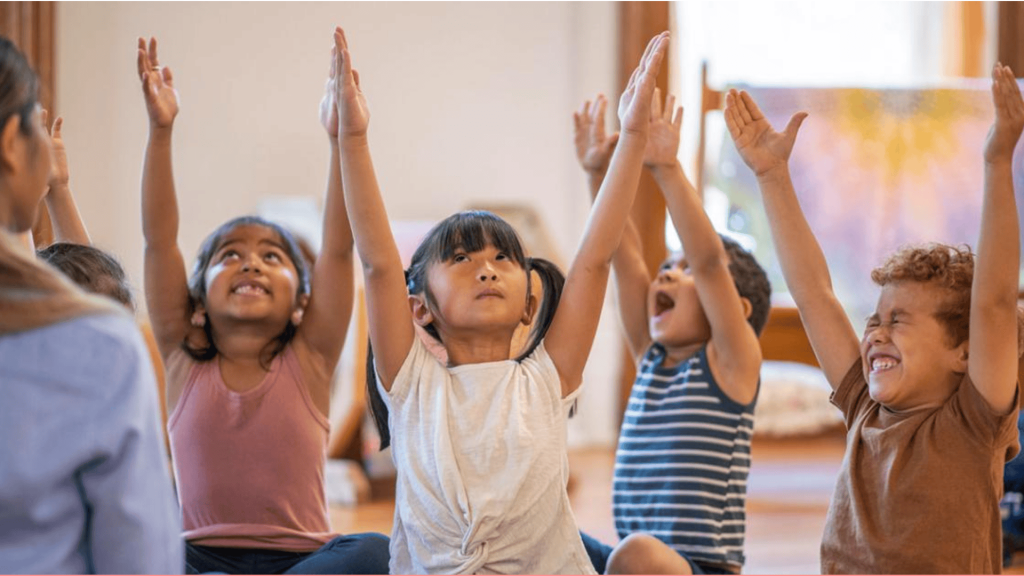Kids can only sit still and focus for so long before their energy starts to drift. That’s why brain break activities make such a difference in classrooms and at home.
Instead of pushing through restlessness, these short pauses give children a chance to move, laugh, or reset their minds before returning to tasks. I’ve seen how a quick stretch, a burst of music, or even a silly riddle can change the entire mood of the room in minutes.
You’ll notice attention sharpen, smiles return, and learning flow more smoothly when you add them at the right moments.
The best part is that you don’t need special tools or a lot of time – just a few simple ideas you can use right away. Let’s go over some creative ways to make learning lighter, calmer, and far more enjoyable.
What are Brain Breaks Activities and Why Do They Matter
A brain break is a short pause that helps kids move, relax, and refocus. Simple activities like stretching, “Simon Says,” breathing exercises, or a quick riddle can instantly reset their energy.
Short breaks recharge the mind and body, boosting focus, memory, and calm. The key is timing; pausing before restlessness begins makes the biggest difference.
Younger children often need one every 10–15 minutes, while older students do well with 20–30 minutes. At home, brain breaks work best between homework tasks.
Just a few minutes can refresh attention and keep learning on track. Selecting the right activity for each age group helps keep students engaged, motivated, and ready to learn.
Different Brain Break Activities to Try
Quick activities can refresh energy and focus in just a few minutes. These ideas are simple, need little to no prep, and keep students engaged while giving their minds a short reset.
Classroom Brain Breaks Ideas
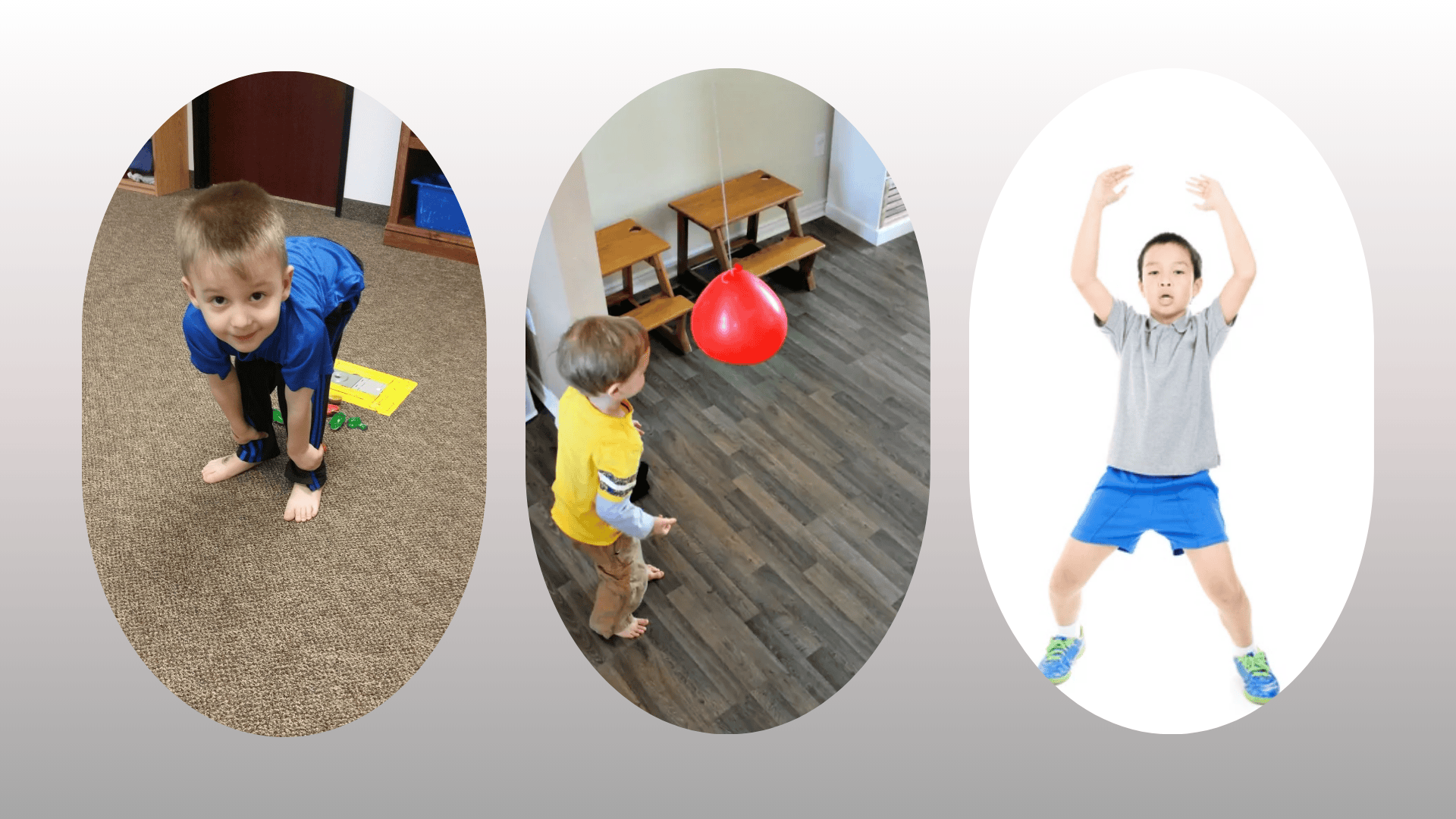
Classroom brain breaks provide brief, energizing pauses that enhance focus, reduce restlessness, and maintain a fun learning environment through movement, stretching, and play.
- Jumping Jacks Burst: Perform a quick burst of jumping jacks to raise your heart rate and circulation, releasing built-up energy quickly. Thirty to sixty seconds is enough to shake off restlessness and wake the body. Students return to tasks more alert, comfortable, and ready to focus with steadier attention.
- Freeze Dance: Play an upbeat song and let students dance freely, pausing the music without warning. Everyone freezes like statues until it resumes. The start-stop pattern builds self-control, listening, and quick reactions. Laughter and movement lift mood, creating a short, effective reset before returning to classwork.
- Simon Says: Lead with commands that only count when prefaced by “Simon says,” mixing stretches, jumps, and funny motions. Students listen closely and respond fast, practicing attention and impulse control. The game introduces movement without setup, creating a reliable and playful break that refreshes energy and engagement.
- Follow the Leader: Choose a student to demonstrate simple motions—hops, spins, marches, or arm circles—while classmates mirror them. Rotate leaders every minute to boost participation and confidence. The shared activity encourages creativity, light exercise, and smiles, releasing restlessness so students rejoin lessons calmer and ready to learn.
- Animal Walks: Invite students to move like animals by hopping like frogs, stomping like elephants, crawling like bears, or tiptoeing like cats. These playful motions build coordination and imagination while channeling extra energy. A brief circuit reset helps mood and attention, enabling kids to return to tasks with steady focus.
- Stretch and Reach: Guide slow stretches, including reaching tall, folding to touch toes, side bends, shoulder rolls, and gentle neck turns. Stretches ease stiffness from sitting, improve circulation, and calm the body. In two minutes, students feel more comfortable and ready to concentrate without aches or fidgeting.
- Quick Dance Party: Play a favorite short song and let students dance in place with simple moves. Freeform motion encourages expression, lifts mood, and quickly releases tension. End with a deep breath and smile. The room resets fast, and kids return to learning with brighter energy.
- March in Place: Have students stand, lift knees high, and swing arms while marching for one minute. Add counting or brief call-outs to keep the rhythm. The steady movement clears sleepy feelings and warms muscles without needing space. Kids finish refreshed, focused, and ready for the next task.
- Balloon Tap: Toss a balloon and keep it from touching the floor. Add teamwork by counting taps or rotating hitters. The light challenge demands focus, coordination, and constant movement. Laughter follows naturally, making a lively reset that builds cooperation and attention in just a few minutes.
- Chair Push-Ups: Students place their hands on the chair edges and gently push up, holding briefly before lowering their hands back to the chair. Repeat several times with a safe form. This discreet strength move breaks sitting monotony, engages core and arms, and sparks alertness. Afterward, kids feel more awake and prepared to focus.
Mindfulness and Calming Brain Breaks
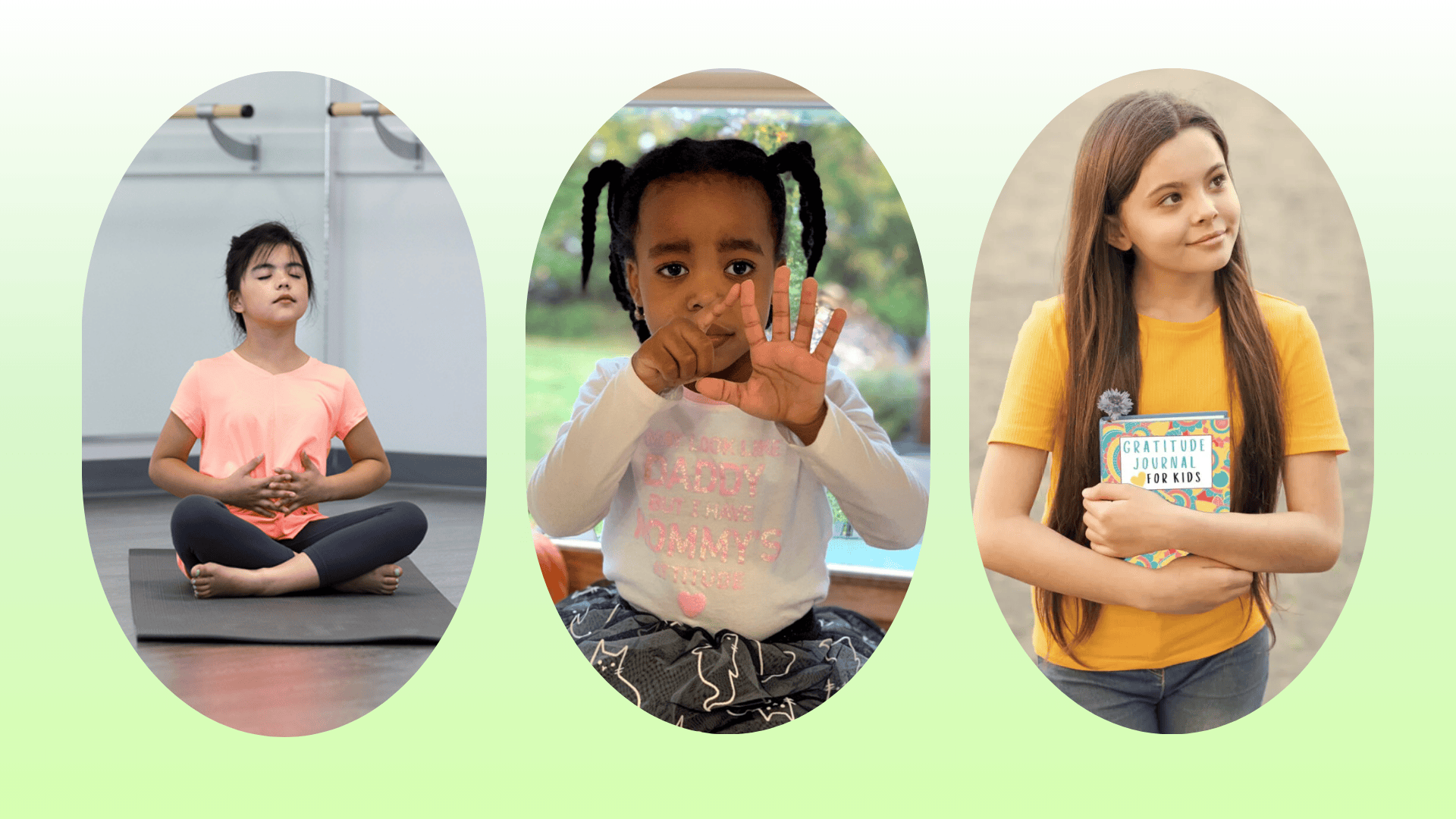
These calming brain breaks help students pause, breathe, and reset, easing stress while restoring focus, balance, and smooth classroom transitions.
- Deep Breathing Exercises: Guide slow, even breaths: inhale four counts, hold briefly, exhale four counts. Repeat several cycles while sitting tall. Breathing steadies emotions, lowers tension, and clears mental noise. It’s especially useful after high-energy moments, bringing quiet balance that supports attention and calm participation.
- 5-4-3-2-1 Grounding: Invite students to notice five things they see, four to touch, three to hear, two to smell, and one to taste or imagine tasting. This sensory checklist anchors attention in the present. Anxiety eases, thoughts settle, and students reenter lessons centered and steady.
- Quiet Reflection: Ask students to close their eyes, rest their hands, and sit in silence for one to two minutes. Encourage calm breathing and soft shoulders. This pause clears mental clutter, reduces classroom noise, and smooths transitions. Learners return clearer, kinder, and more ready to listen.
- Guided Visualization: Lead a brief scene: walking a garden path, floating on a cloud, or resting by gentle waves. Include sights, sounds, scents, and temperature. Visualization relaxes the body and settles the emotions while engaging the imagination, helping students return to a balanced and focused state.
- Gratitude Pause: Invite students to think of one person, place, or moment they appreciate today, then write a sentence or share aloud. Gratitude lifts mood and strengthens classroom warmth. This brief practice helps build perspective and reset attention, supporting kinder interactions and steady motivation.
- Stretch with Breathing: Pair movement with breath: inhale while arms rise, exhale while arms lower. Add gentle side reaches and shoulder rolls. Coordinating breath and motion reduces tension and tunes focus. After a minute, students feel grounded, calmer, and ready for thoughtful work.
- Body Scan Exercise: Guide attention from head to toes, noticing and releasing any tight spots in the jaw, shoulders, back, legs, or feet. Encourage slow breaths with each release. The scan builds awareness and relaxation, easing stress before challenging tasks and restoring quiet readiness to learn.
- Counting Breaths: Students close their eyes and count ten slow breaths, starting over if attention wanders. The simple structure holds focus without pressure. Within a minute, distractions fade, pace slows, and learners feel centered. It’s a quick, dependable path back to calm thinking.
- Visualization Drawing: Ask students to picture a peaceful scene, such as a beach, forest, or mountain view, and then sketch it quickly. Drawing channels calm feelings into lines and shapes, easing stress while encouraging imagination and creativity. When finished, students feel lighter and more prepared to concentrate on academics.
- Positive Affirmations: Have students repeat short phrases silently or aloud, such as “I can learn this,” “I stay calm,” and “I try my best.” Affirmations shift mindset, reduce worry, and support resilience. The practice builds confidence and helps learners reenter lessons with steady motivation.
Creative Brain Breaks Ideas
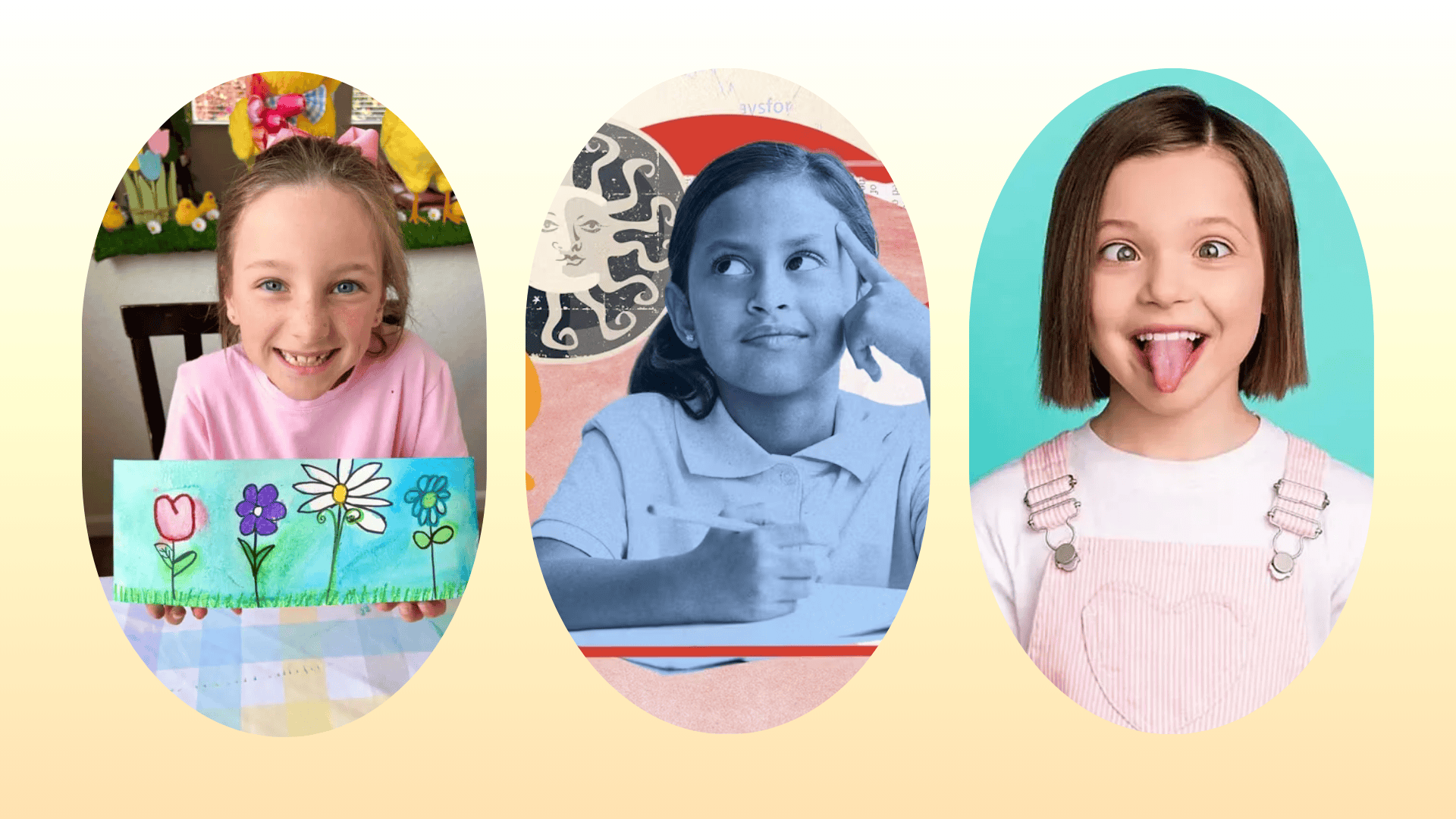
Creative brain breaks spark imagination through drawing, storytelling, and puzzles, offering playful resets that boost focus, teamwork, and classroom energy.
- Doodle Time: Give one minute for free doodling—patterns, shapes, or tiny scenes. No rules, no grading. Doodling relaxes the brain, occupies fidgety hands, and invites creativity. Students return calmer, with minds refreshed and ready to engage with structured tasks again.
- Quick Storytelling: Create a group story, adding one sentence per student. Set a light theme or random prompt. The cooperative chain builds language fluency, listening skills, and promotes laughter without preparation. In minutes, the room feels connected and energized, making the shift back to learning smooth.
- Riddle Challenge: Share a short riddle and take quick guesses. Encourage students to explain their thinking before revealing the answer. Riddles train flexible thinking, curiosity, and patience. The playful puzzle moment sharpens minds and resets attention without pressure or extra materials.
- Word Association Game: Say a word; students respond with the first related word they think of. Keep a brisk pace and rotate voices. This game sparks creativity, vocabulary, and quick connections. It’s light and fun, helping the class shake off sluggish thinking.
- Mini Comic Strips: Invite learners to draw a two-panel comic about a simple moment or silly idea. Comics blend humor, sequence, and expression in a low-stakes format. The creative pause refreshes mood and primes students to rejoin lessons with clearer heads.
- Tongue Twister Fun: Pick a short tongue twister and repeat it three times faster each round. The playful challenge improves articulation, listening, and focus. Expect giggles and retries. In under two minutes, the group feels lively again and ready to continue.
- Pictionary Sprint: Draw a simple object on the board while students rapidly guess. Rotate student artists for extra fun. The quick visual puzzle builds participation, observation, and confidence. It’s a lively reset that returns the room to learning with smiles.
- Collaborative Poem: Students add one line each to build a very short poem, rhymed or not. The shared creation strengthens voice, listening, and community. With no grades or pressure, kids enjoy language play, then shift back to tasks that are more engaging.
- Story Dice: Roll image dice or show random pictures and craft a tiny story using all elements. The time limit keeps it lively. This activity blends imagination with structure, building narrative skills while offering a spirited reset between lessons.
- Word Ladder: Start with a simple word and change one letter at each step to create new words, reaching the target word quickly. The puzzle strengthens phonics, spelling, and flexible thinking. It’s brisk, satisfying, and energizes minds for upcoming work.
Academic Brain Breaks Ideas
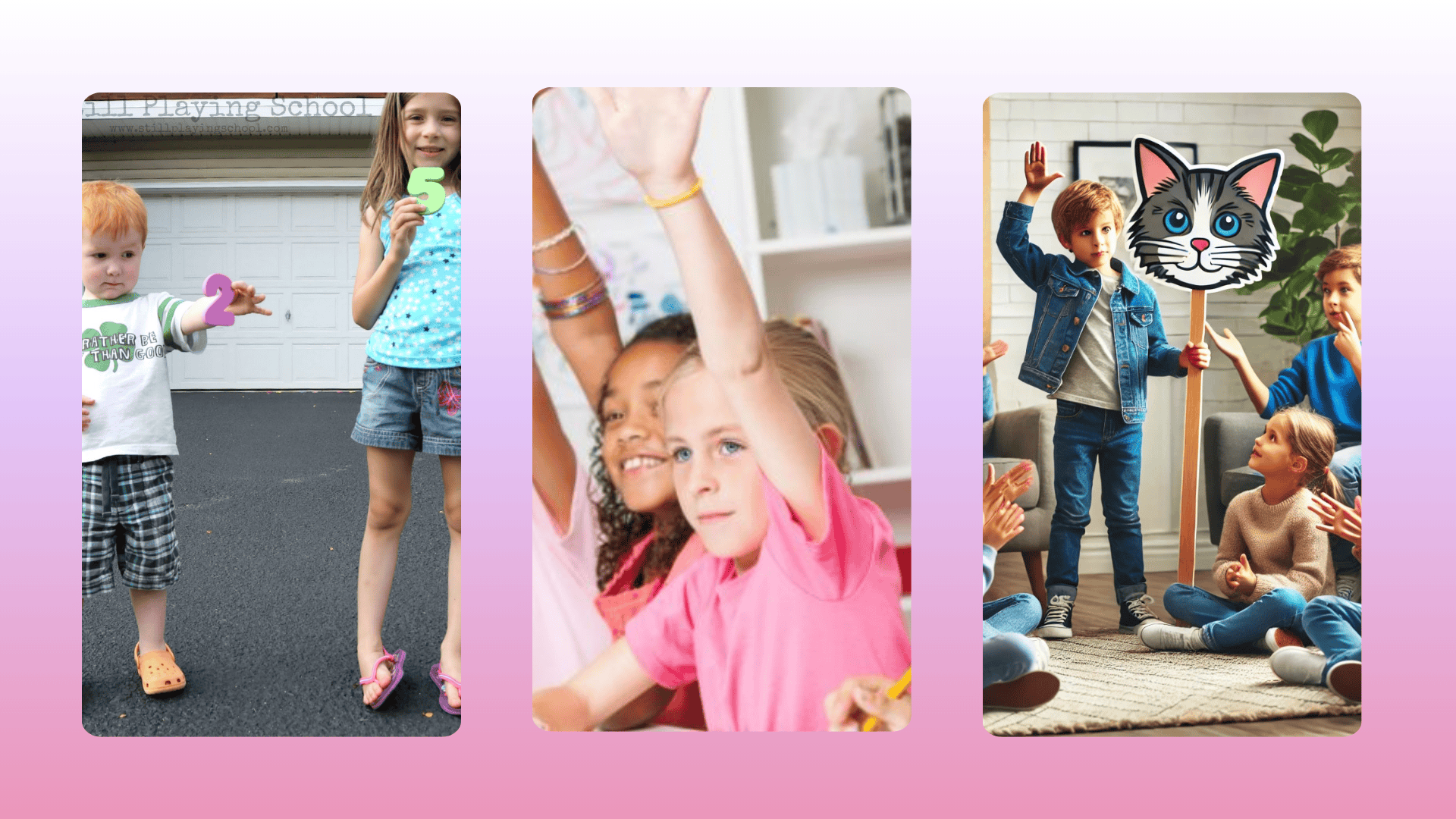
Keep learning lively with playful reviews that mix math, vocabulary, and problem-solving, offering a fun reset while sharpening focus.
- Math Races: Pair students or form small teams and flash quick problems they can solve on whiteboards or paper. Keep rounds short and cheerful. The game turns practice into play, sharpening recall while maintaining a friendly, low-pressure vibe that refreshes attention.
- Spelling Bee Mini: Run a brief round with approachable words. Add a time cap or team format to keep it light. Students build vocabulary and confidence without a long setup. The quick, focused competition recharges energy and keeps language practice engaging.
- Trivia Quizzes: Ask fast trivia tied to current topics or general knowledge. Students answer individually or in teams. Trivia encourages recall, curiosity, and spirited discussion without the pressure of tests. It’s a lively way to reset thinking and reinforce content.
- Flashcard Sprint: Show flashcards of math facts, vocabulary, dates, and have students respond instantly. Rotate volunteers or teams to maintain a brisk pace. The sprint sharpens memory and attention, delivering efficient review in a playful format that resets the room quickly.
- Quick Write Challenge: Give two minutes to write three sentences on a silly prompt or class theme. Time pressure fuels focus while keeping stakes low. Short writing bursts build fluency and creativity, helping students reenter lessons with clearer minds.
- Review Relay: Teams answer one review question, then pass to the next teammate. Movement and turn-taking add excitement while staying organized. The relay keeps practice dynamic, reinforces material, and returns students to seatwork energized and confident.
- Vocabulary Charades: Students act out vocabulary words while classmates attempt to guess them. No speaking, only gestures, expressions, and context clues. This active format deepens word understanding, invites laughter, and strengthens memory, giving the class a spirited reset.
High-Energy Group Games
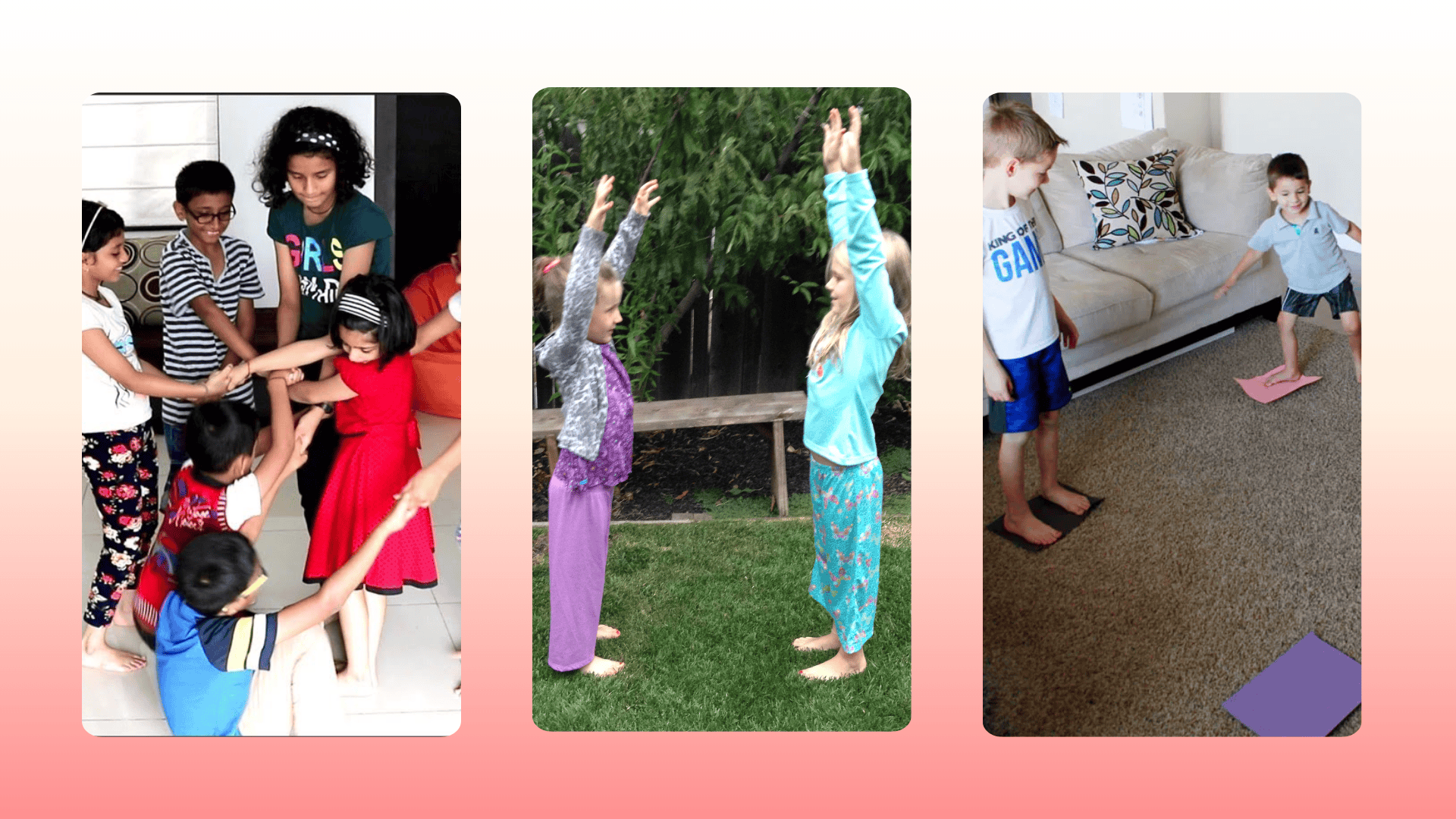
These activities blend teamwork, movement, and laughter, boosting focus, cooperation, and problem-solving while delivering quick, structured bursts of energy.
- Human Knot: In a circle, students grab random hands, then collaborate to untangle without letting go. The puzzle fosters communication, patience, and problem-solving skills. It’s active and social, creating a memorable reset that strengthens teamwork before academics resume.
- Silent Ball: Toss a soft ball around the room without speaking. Dropping, poor throws, or noise means sitting out briefly. The quiet challenge improves coordination, restraint, and awareness. It’s energizing yet calm, ideal when the class needs both structure and movement.
- Mirror Movements: Partners face each other; one leads slow motions while the other mirrors exactly. Switch roles after a minute. Mirroring sharpens observation, timing, and focus while creating a friendly connection. Students return to tasks attentive and settled.
- Line-Up Challenges: Ask students to line up by height, birthday month, or shoe color as quickly and quietly as possible. The task requires communication and quick organization without chaos. It’s a simple movement with purpose, resetting attention while practicing cooperation.
- Four Corners: Label corners with categories or answers. Call a prompt; students choose a corner that fits their description. The light decision-making, combined with movement, helps maintain high energy levels. It’s quick, inclusive, and lifts mood before returning to learning.
Mind-Boosting Puzzles and Games
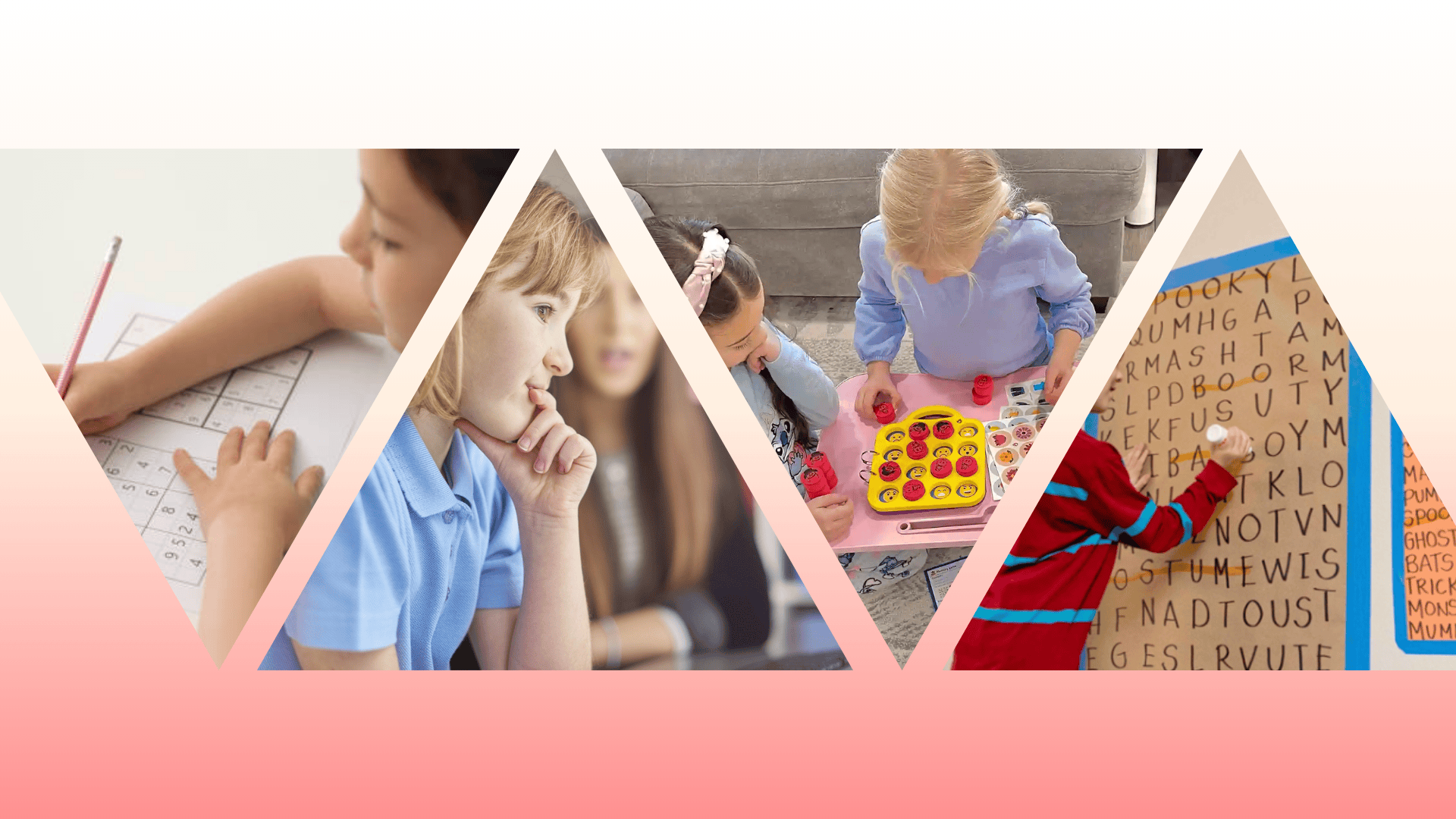
Short puzzles and games refresh learning by sharpening memory, observation, and problem-solving, offering a fun, low-pressure classroom reset.
- Sudoku Mini: Hand out tiny Sudoku grids with a few blanks. Students apply logic quietly for a minute or two. The focused puzzle shifts gears from language or movement to careful reasoning, delivering a calm mental reset without fuss.
- Word Search Sprint: Give a compact word search and set a two-minute timer. Students hunt quickly, building pattern recognition and vocabulary. The defined challenge feels playful and satisfying, restoring concentration for the next learning block.
- Brain Teasers: Offer a brief lateral thinking puzzle and collect quick ideas before revealing the solution. Teasers encourage flexible thinking, persistence, and curiosity. The short surprise moment refreshes minds and makes transitioning back to academics easier.
- Memory Match: Flip two cards at a time to find pairs—pictures, words, or concepts. The game trains attention and recall while staying light. Adapt difficulty by age. Kids enjoy the quick challenge and return more focused.
- Spot the Difference: Show two similar images and ask students to identify the differences within a specified time limit. This visual task strengthens observation and patience. It feels like play but sharpens attention, preparing learners to notice details in upcoming work.
Seasonal and Holiday-Themed Breaks
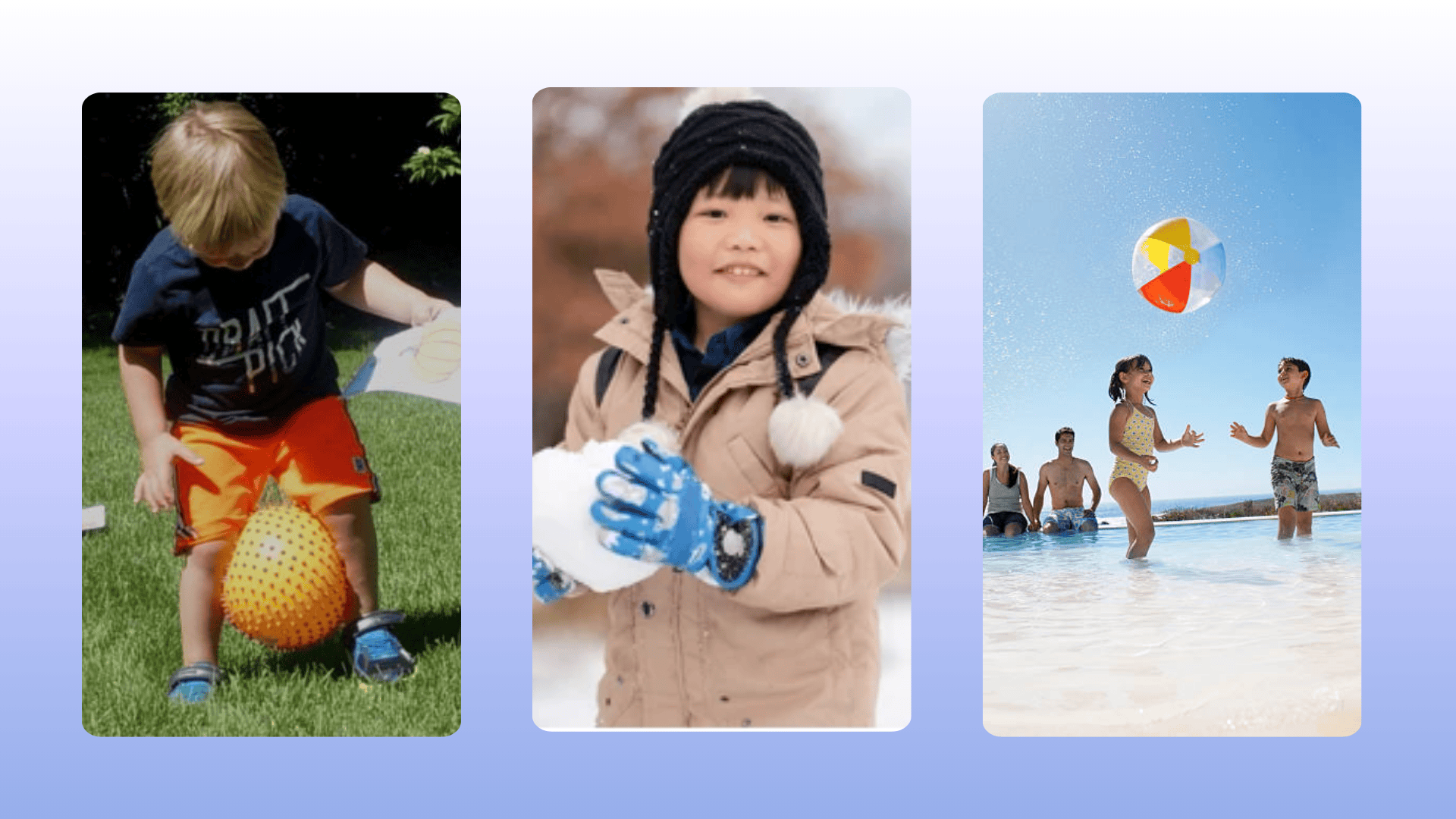
Seasonal brain breaks tie activities to the year’s events, adding variety, joy, and anticipation while keeping students refreshed and engaged.
- Pumpkin Relay (Fall): Teams pass a small pumpkin or ball down a line and back without dropping. The seasonal twist adds novelty and teamwork. It’s energetic, cheerful, and brief, providing autumn days with a fun reset that fosters cooperation.
- Snowball Toss (Winter): Crumple paper into safe “snowballs” and toss into bins or at marked targets. Quick rounds generate movement and laughter without mess. It’s a fast, seasonal way to lift spirits and restore focus during colder months.
- Spring Flower Stretch: Begin crouched like a seed, then rise slowly, opening arms like petals. Add gentle sun reaches and breezy side bends. The calm, imaginative sequence loosens muscles and centers attention, matching spring themes while preparing minds for learning.
- Beach Ball Toss (Summer): Toss a lightweight beach ball with questions written on panels. Whoever catches answers briefly, then tosses again. The activity blends movement, social sharing, and seasonal fun, leaving students refreshed and engaged.
- Holiday Trivia: Ask short, inclusive holiday or seasonal questions. Students recall fun facts, share traditions, and learn about others with respect. Trivia boosts connection, curiosity, and good cheer, offering a lively reset without pressure.
Online and Virtual Brain Breaks
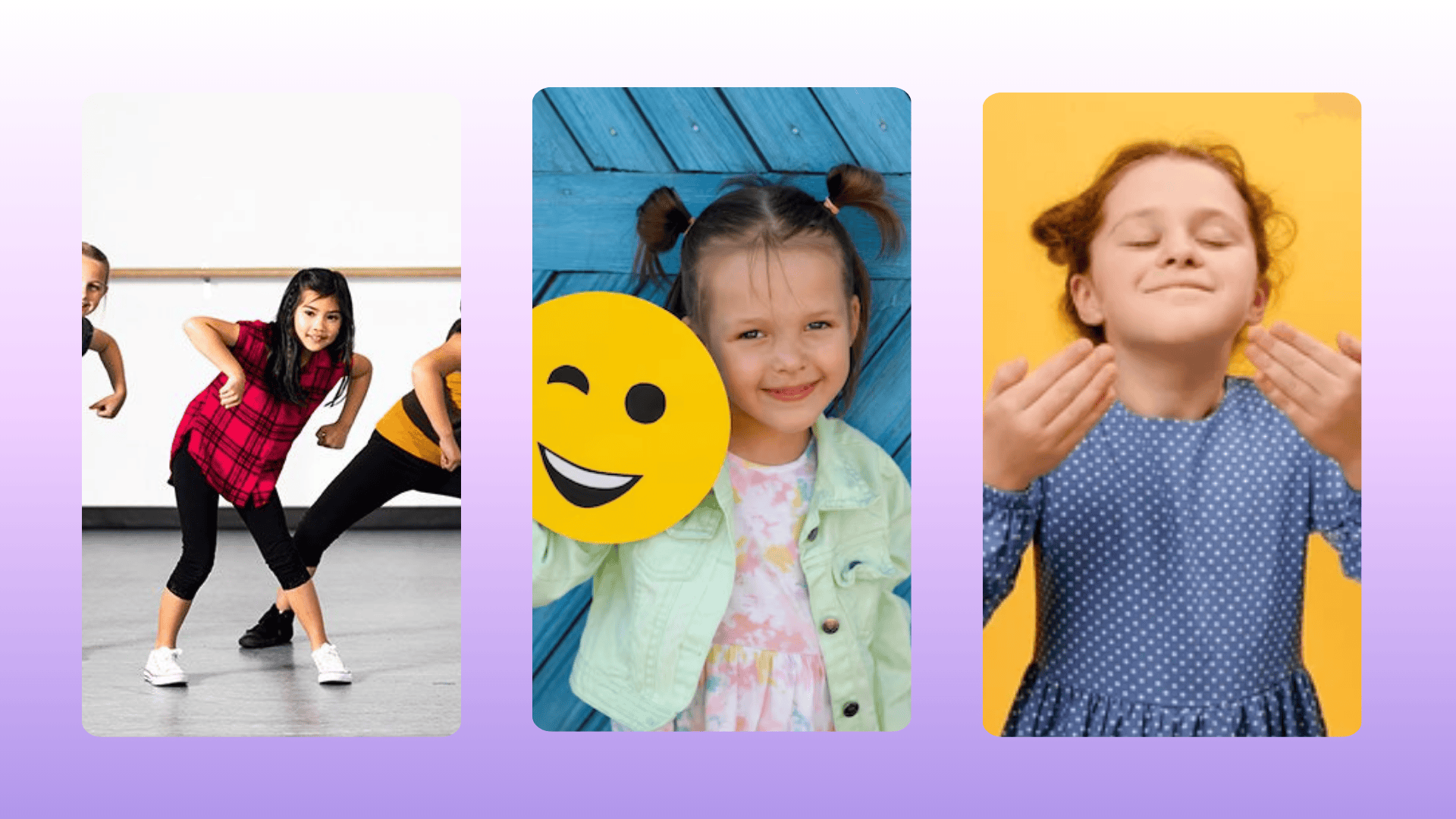
Simple online activities, such as movement, games, or guided breathing, keep students refreshed, connected, and engaged, ensuring lessons remain interactive and balanced, even in digital settings.
- Camera-On Stretch: In virtual class, invite everyone to stand and stretch together on camera. Shared movement cuts screen fatigue and builds community. In two minutes, posture improves, energy rises, and learners feel more present for the next segment.
- One-Minute Dance: Play upbeat music and dance on camera for exactly one minute. Even online, movement loosens stiffness and lifts mood. The brief burst keeps lessons lively while respecting time, helping students reengage quickly.
- Find-and-Show Game: Give a quick prompt—“something blue,” “something round,” “something soft.” Students find an item at home and show it on screen. It blends movement, creativity, and social connection, bringing fresh energy to online lessons.
- Emoji Check-In: Ask students to drop an emoji in chat that matches their mood. This quick pulse fosters empathy and provides valuable insight. A short follow-up helps normalize feelings and gently re-centers the group for learning.
- Guided Breathing Video: Play a short breathing or calming clip. Visual guidance helps hold attention and reduce stress, especially online, where physical movement is limited. After a minute, the class feels steadier and ready to continue.
Special Additions
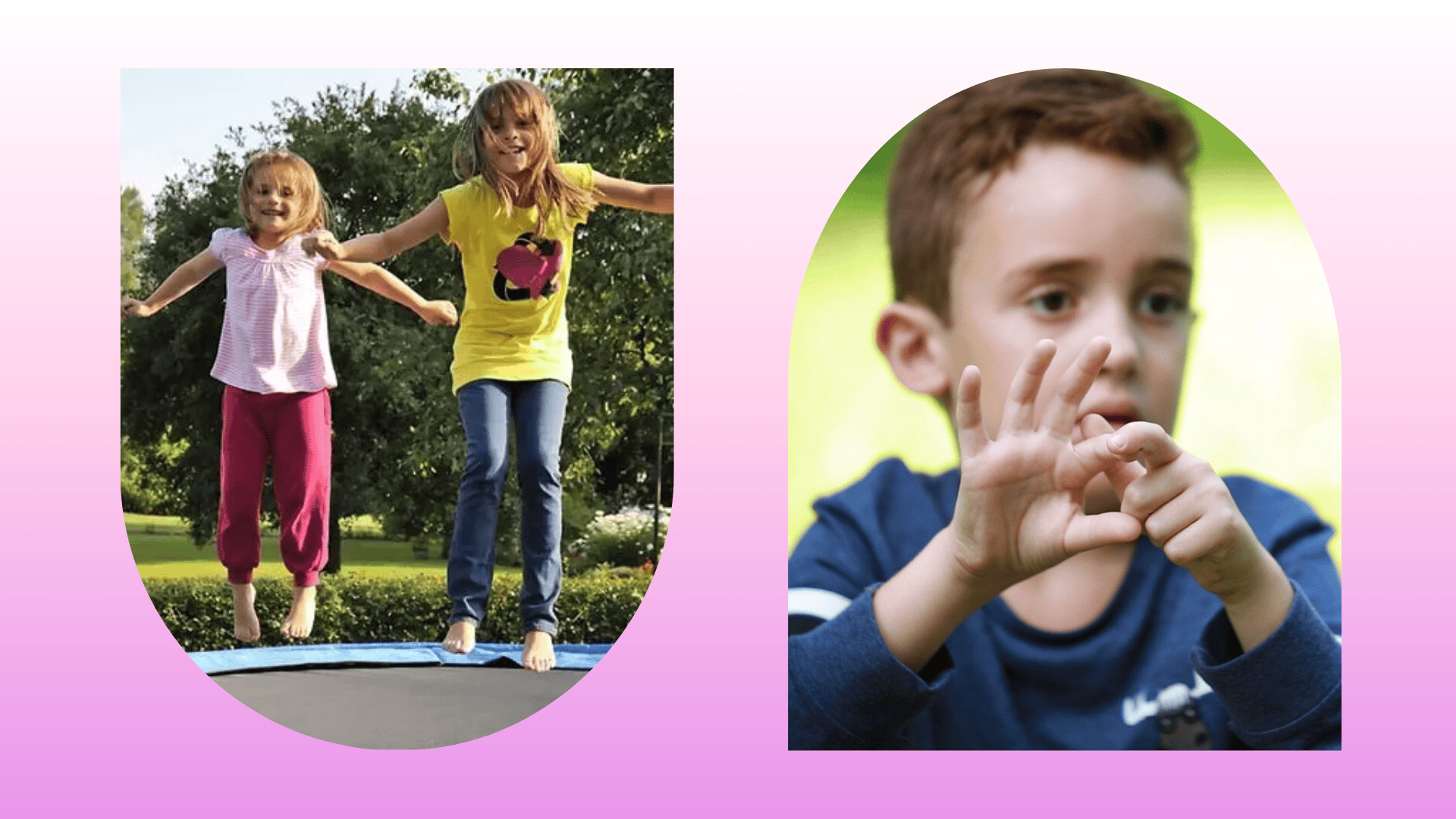
Special additions provide extra support through structure, sensory input, and calming tools, helping students manage their energy, focus, and balance more effectively.
- Jump-and-Count (ADHD Friendly): Students jump lightly while counting aloud or skip-counting. Combining voice and movement channels energy and supports focus. The predictable rhythm helps kids regulate attention and transition back to seated work smoothly.
- Sensory Stretch Bands: Use light resistance bands for slow, guided stretches. The tactile feedback grounds restless bodies and soothes nerves. Structured movements provide safe input that calms the mind while engaging muscles, preparing the body for focused tasks.
- Breathing with Hand Tracing: Students trace each finger while breathing, inhaling as they move up and exhaling as they move down, around the hand. The multi-sensory pattern steadies attention and eases worry. It’s simple, quiet, and especially helpful for learners who benefit from predictable routines.
Short and Simple Anytime Breaks
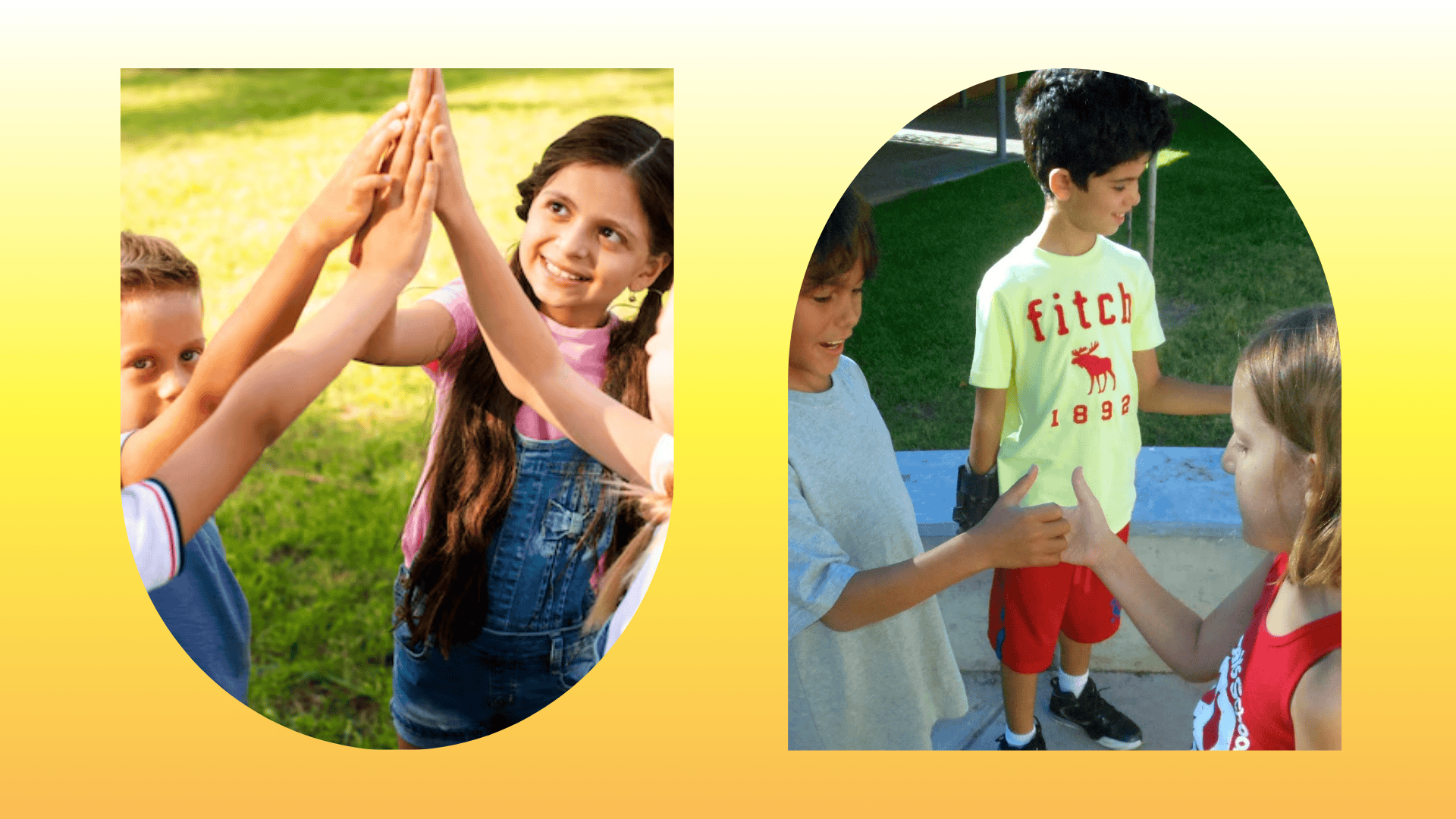
Quick brain breaks need little prep, take under a minute, and instantly refresh students with playful energy, focus, and balance.
- High-Five Chain: Start a quick wave of high-fives across the room or along rows. The small gesture builds connection, lifts mood, and adds movement in under a minute. Kids return to tasks smiling and ready.
- Stretch and Yawn: Invite a big overhead stretch and an exaggerated yawn. The playful release eases tension, oxygenates the body, and sparks a sense of humor. It’s universal, fast, and resets posture and mindset before resuming work.
- Shake It Out: Stand and shake arms, legs, shoulders, and hands for thirty seconds. Add a final full-body shimmy. The burst loosens tightness, breaks monotony, and brightens the room, restoring fresh focus.
- Thumb Wars: Pair up for quick thumb wrestling with friendly rules. The tiny contest builds coordination, attention, and social connection. Keep rounds short and light so everyone reenters learning energized and cheerful.
- Alphabet Stretch: Call a letter and have students shape it with their bodies alone or in pairs. The activity blends movement and imagination, encouraging problem-solving and teamwork while refreshing attention.
- Quick Compliments: Partners exchange one sincere compliment. Positive words lift mood, strengthen relationships, and reinforce a supportive climate. The brief interaction shifts energy and helps students rejoin lessons feeling valued and cooperative.
- Joke Sharing: Invite a few short, age-appropriate jokes. Humor lowers stress, builds community, and resets energy in minutes. The room feels lighter, and students return to learning in a more open, relaxed, and attentive manner.
Practical Implementation
A simple way to think about making brain breaks effective. When they’re consistent and structured, they refresh energy without losing momentum in learning. Below are three key guidelines to follow:
How Often to Use Brain Breaks
Younger kids need pauses every 10–15 minutes, while older students can stretch it to 20–30 minutes. Middle and high school learners do well with 30–40 minutes. Frequent, shorter breaks refresh focus better than infrequent, long ones.
How Long Should They Last
Breaks should be long enough to reset but short enough not to lose momentum. One to three minutes works well, five to seven minutes fit demanding lessons, and ten minutes suit tests or subject transitions.
Signs Your Class Needs a Brain Break
Restlessness, fidgeting, or wandering attention often signal it’s time to pause. Rising noise, incomplete work, or a decline in quality also indicates fatigue. Quick breaks restore focus and calm effectively.
Using these simple points helps you incorporate brain breaks in ways that boost learning, maintain energy balance, and make classroom time smoother for both teachers and students.
Online Tools and Resources
Online tools make brain breaks easy with ready-to-use activities that save time, boost energy, and fit smoothly into lessons.
- GoNoodle: Short, interactive videos that spark movement, mindfulness, and focus. Fun themes keep students active while giving teachers extra planning time.
- YouTube: Free videos with dance, mindfulness, and quick challenges. Popular picks include GoNoodle Games, Cosmic Kids Yoga, and Just Dance Kids.
- Classroomscreen: Customizable tools and templates that help organize and manage brain breaks, adding structure and variety.
- Edutopia: Interactive resources that inspire teamwork, curiosity, and fun. Useful in both classroom and online settings to keep learning balanced.
These platforms bring variety and ease, helping brain breaks stay fun while saving teachers time and keeping students motivated.
Conclusion
Short pauses can shift the tone of a whole lesson. With a few purposeful breaks, students move, breathe, laugh, and return ready to learn.
No props or heavy prep are needed—just quick options. Keep timing steady, notice what works best, and mix movement, breathing, puzzles, and playful review.
Keep a small list ready for transitions, early finishes, or slow afternoons, and let students share ideas to keep things fresh. Over time, you’ll see calmer voices, smoother starts, and sharper focus without losing flow.
Try two or three ideas this week, set a routine, and adjust as you go. Keep it simple, stay steady, and share your experience in the comments below.


